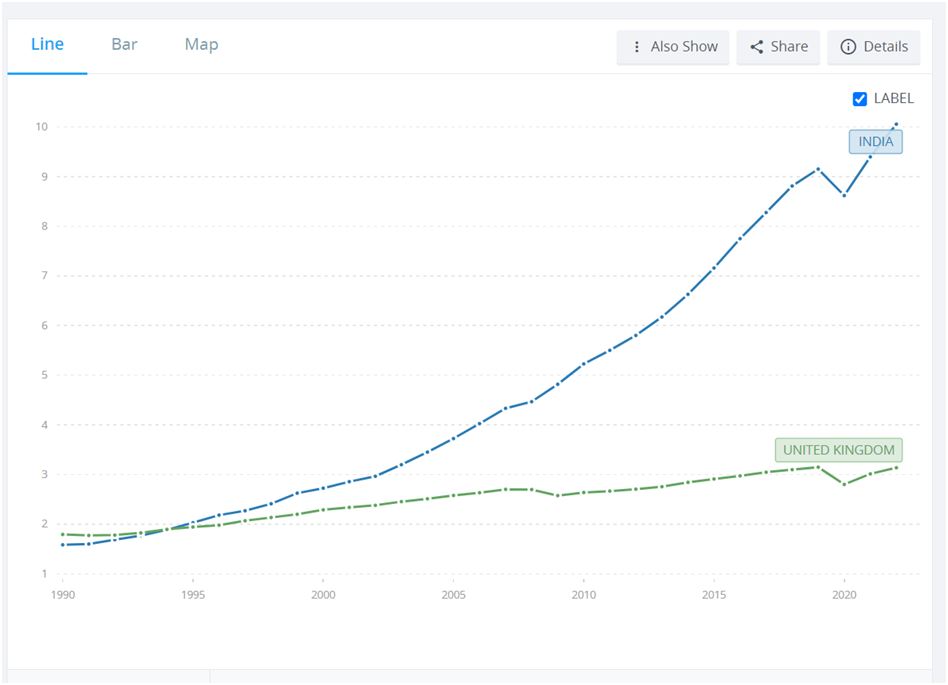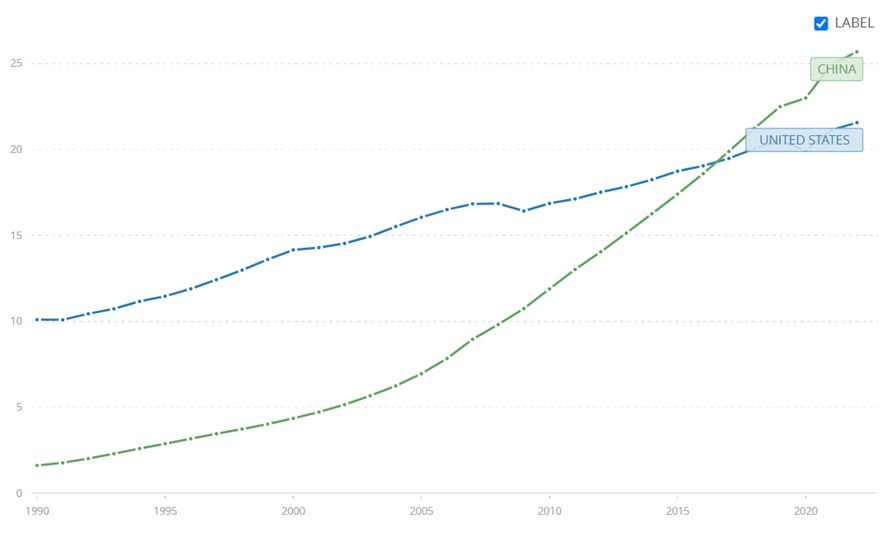By Tom O’Donnell
The G20 summit was an historic one. It marked a decisive change in the relative weight of the imperialist countries versus the Global South, to the benefit of the latter.
The G7 countries led by the US approached the G20 summit in India hoping for a repeat denunciation of Russia and its invasion of the Ukraine as in the Bali summit last year. A comparison of the 2 statements coming out of those summits indicates how much the world has changed in just a year. Then, the statement added to its denunciation of Russia claims that the majority of countries opposed Russia. But in a 34-page statement (pdf) the sole mentions of Russia were in relation to the negotiations brokered by Turkey between Russia and Ukraine around grain and other shipments, with hopes for their success.
The British government in particular was caught out by the changing alignments. PM Sunak had told the world, via the front page of The Times, that he was going to be lecturing PM Modi to ‘get off the fence over Russia’. Instead, there was no such instruction, and it might be said that the G20 as a group climbed up on the fence over Russia.
Of course, the change from one year to the next cannot be ascribed to long-term economic shifts. Politics takes primacy. Yet there are fundamental economic reasons why British Prime Ministers can no longer dictate to the Indian authorities. India has long since surpassed the British economy. And this relative weight in the world underpins the real relationship of forces between the two countries. This change in relative weights is so important it should be examined in a little detail.
In real terms and adjusted for Purchasing Power Parities (PPPs) the Indian economy re-surpassed the British economy in 1995 and is now more than 3 times greater in size, as shown in the chart below.
Chart 1. Indian and British real GDP in PPP-adjusted international $, 1990-2022

Source: World Bank
But the relatively sharp diminished size of the British economy means that this example has only an illustrative purpose. Naturally, the US remains the most import of the G7 countries and was the one pressing hardest for condemnation of Russia.
It is widely, if not universally accepted that the Chinese economy has re-surpassed the economy of the United States. It is certainly true using the same real, PPP-adjusted measures as earlier. According to World Bank data this happened in 2017. Now the Chinese economy is estimated to be almost 20% larger than the US, as shown in Chart 2 below.
Chart 2. China real GDP and United States real GDP in PPP-adjusted international $, 1990-2022

Source: World Bank
This is the most import change in the relative weights in the world economy. The renewed surpassing by China of the US economy is the leading factor in the transformation of the relative weights of key groups of countries internationally.
So, it is now a remarkable fact that, using the same measures of real PPP-adjusted GDP, that the BRICS countries have now surpassed those of the G7 economies as a group. BRICS comprises Brazil, India, Russia, China and South Africa.
According to World Bank data, 2022 saw the BRICS GDP rise to 43.83 trillion international dollars. This compares to the total for the G7 of 42.03 trillion international dollars. The scale of this transformation, led by China, can be indicated by reference to the relative sizes of the two groups of economies in 1990.
Then the G7 economies’ real GDP was 23.87 trillion international dollars, while the BRICS countries’ GDP was just 7.38 trillion international dollars. Over the span of 32 years, the G7 economies have not quite doubled. Over the same period the BRICS economies have grown nearly sixfold.
Without some disastrous intervention such as war, we should not expect these trends to alter. Sustained stronger growth over a 32-year period strongly suggests that the BRICS economies will continue to grow more rapidly than the G7 over the medium-term.
But there is also an important historical precedent. For much of recorded history, China and India were the two largest economies in the world. This is a natural outcome of being the two most populous countries in the world. It required military intervention in the form of invasion and colonisation to halt and then reverse their weightings in the world economy.
According to Angus Maddison data, China and India together accounted for almost 60% of world GDP from AD 1 and were still responsible for half of world output in AD 1,000. This remained true until the beginning of the 19th century. It was only after India’s colonisation by Britain and China’s dismemberment by a series of colonial powers in the mid-19th century that this position of economic leadership was challenged and then reversed. Even so, it was not until the end of the 19th century that the British economy surpassed the Indian economy and the US surpassed China. As recently as the late 1930s, the Chinese economy, despite all its ravages and humiliations, was still larger than Britain’s.
Therefore, in addition to stronger medium-term momentum, it is possible to say that the relatively stronger growth of the BRICS is a restoration of the natural global economic order, a return to the world on its proper axis.
The BRICS economies have history on their side, as part of a restoration and regeneration that began with decolonisation at the end of the Second World War. This has far-reaching implications for humanity as a whole, and international relations within it.
It should also be said that every non-economic measure taken to prevent this return to the natural order is by its nature reactionary and should be vigorously opposed.

Recent Comments